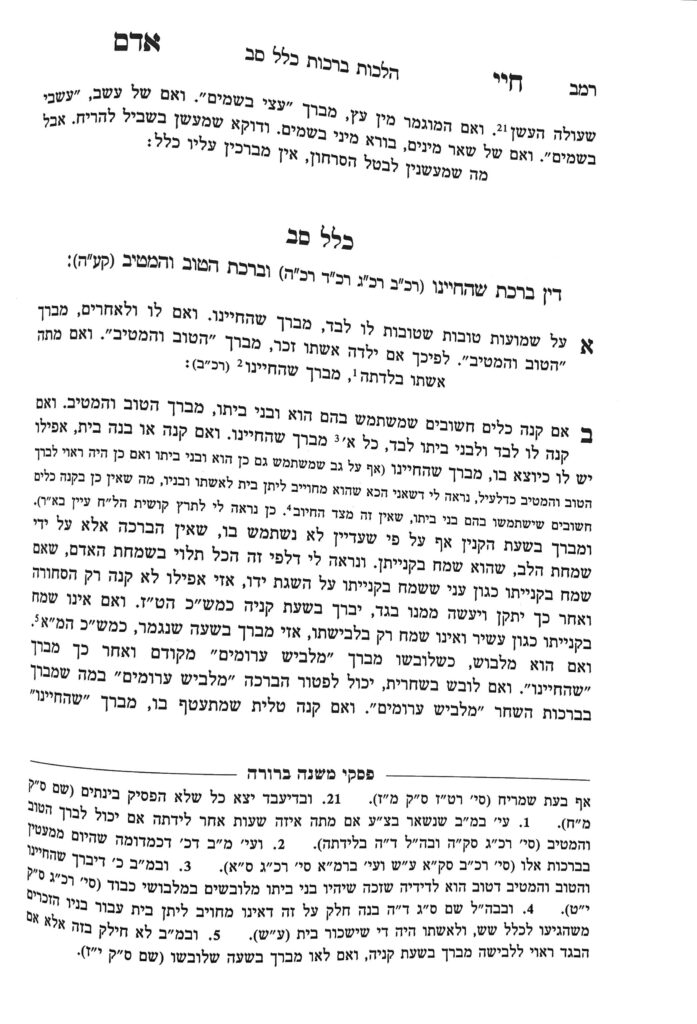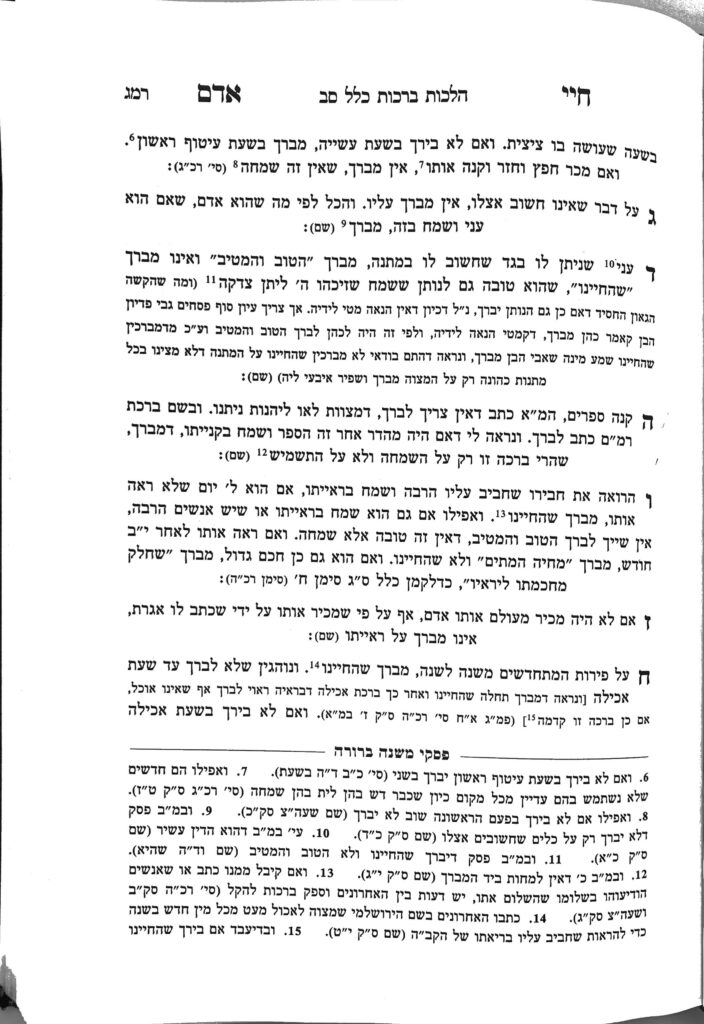We are beginning siman 2. We learned that the appropriate time to make the bracha shehecheyanu is when the item is first acquired. However, if the item is not usable at the time of acquisition, the bracha is made upon its first use.
In siman 2, the Chayei Adam writes that in addition to a bracha on the simcha of the acquisition, a person needs to make a bracha on the actual item. Thus, for example, if one acquires new clothing, one should make the bracha of malbish arumim and then the shehecheyanu before wearing the item (if one did not make the shehecheyanu at the time of acquisition).
If one wears the item for the first time in the morning, before they have said the birchos hashachar, they can exempt themselves through the malbish arumim in birchos hashachar.
The prevailing minhag is not to make the bracha malbish arumim on new clothing. The Shulchan Aruch Harav suggests to recite the bracha without Hashem’s name (i.e., baruch malbish arumim).
It is not clear why it has become the minhag not to make the bracha. Nonetheless, one should recite the bracha without Hashem’s name, or try to put it on in the morning, in order to exempt it through the malbish arumim in birchos hashachar
If one purchases a mitzvah item, it is questionable whether one makes a bracha, because we know that mitzvos lav le’henos nitnu (mitzvos were not given for us to gain material benefit, therefore any perceived material benefit is not halachically considered benefit). However, when one purchases a new tallis, all agree that shehecheyanu should be made, because a tallis is considered a beged (article of clothing) in addition to being a mitzvah item.
The correct time to recite the shehecheyanu is when one strings the tzitzis on the tallis. If one buys the tallis with the tzitzis already strung, he should make the bracha when he first wears it.
If one did not make the shehecheyanu at the time of acquisition, nor at the time they first donned the item, they may recite the bracha as long as they are still wearing it for the first time. If a person forgot to make the bracha when wearing the item the first time, the Biur Halacha writes that one may still make the bracha as long as they are still in a state of simcha over the item. The Shulchan Aruch Harav disagrees, but the primary psak for Ashkenazim is in accordance with the Biur Halacha.
Summary
- Although the Chayei Adam, among other poskim, write that one should recite malbish arumim in addition to shehecheyanu before wearing an article of clothing for the first time, the prevailing minhag is not to make the bracha.
- It is commendable to don the garment before birchos hashachar, in order to exempt it with the malbish arumim in birchos hashachar, or to recite the bracha without Hashem’s name.
- Although it is questionable whether one makes a shehecheyanu on a mitzvah item, one recites shehecheyanu on a tallis.
- The optimal time to recite the bracha is when stringing the tzitzis. If one buys a tallis with the tzitzis already strung, they should recite the bracha when first wearing it.
- If one did not make the shehecheyanu at the time of acquisition, nor at the time they first donned the item, they may recite the bracha as long as they are still in a state of simcha over the item.




